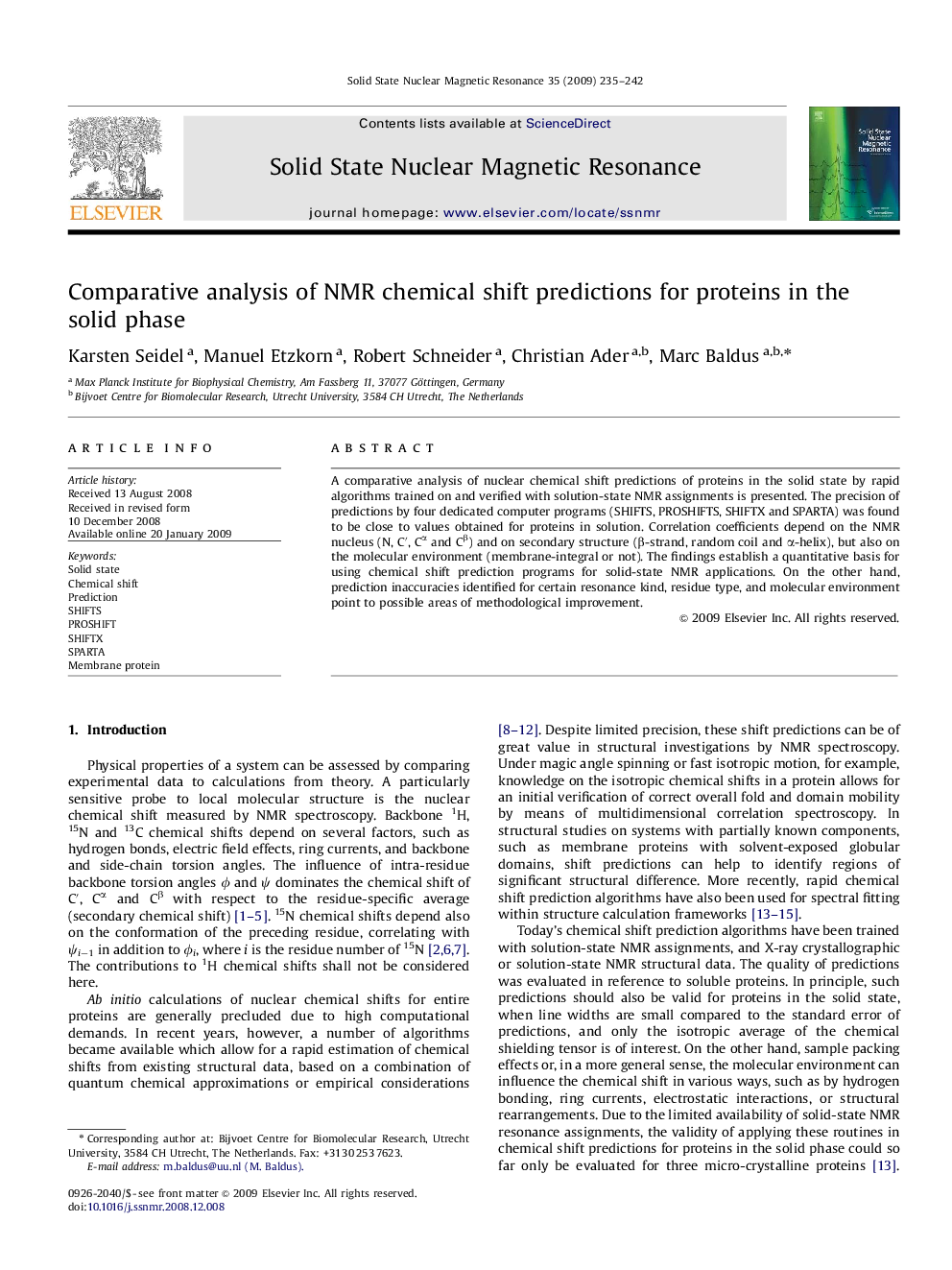| Article ID | Journal | Published Year | Pages | File Type |
|---|---|---|---|---|
| 5420642 | Solid State Nuclear Magnetic Resonance | 2009 | 8 Pages |
Abstract
A comparative analysis of nuclear chemical shift predictions of proteins in the solid state by rapid algorithms trained on and verified with solution-state NMR assignments is presented. The precision of predictions by four dedicated computer programs (SHIFTS, PROSHIFTS, SHIFTX and SPARTA) was found to be close to values obtained for proteins in solution. Correlation coefficients depend on the NMR nucleus (N, Câ², Cα and Cβ) and on secondary structure (β-strand, random coil and α-helix), but also on the molecular environment (membrane-integral or not). The findings establish a quantitative basis for using chemical shift prediction programs for solid-state NMR applications. On the other hand, prediction inaccuracies identified for certain resonance kind, residue type, and molecular environment point to possible areas of methodological improvement.
Related Topics
Physical Sciences and Engineering
Chemistry
Physical and Theoretical Chemistry
Authors
Karsten Seidel, Manuel Etzkorn, Robert Schneider, Christian Ader, Marc Baldus,
